Text
What I'm Doing
I doubt I'll ever forget the first time I ate at a restaurant during the pandemic. That evening at Otis in East Williamsburg last September would have been a familiar indulgence a year earlier, but after living in relative isolation for six months (which was, I realize, a privilege), it felt like a dream. I don't remember exactly what I ate; I do remember rich flavors from a plate fresh out of the kitchen, a refreshingly bitter cocktail, and the cool early autumn air. But what I recall most vividly is how it felt to be cared for by the attentive and welcoming staff, and how sharing new and different foods helped my partner and I connect in a way we hadn't for a good while. I was overwhelmed by how that experience filled my heart.
I held onto that feeling at the end of last year when I realized that I could no longer do the work that I was doing. I was starting to feel the burnout that's walloped countless other journalists in recent months, many of whom have far more demanding jobs than mine. But I was also repeating a pattern that's colored my entire (brief) career. In my first job I wrote what felt like a lot of stories and worked a lot of late nights. I got a new job that I hoped would give me more time to focus on deeper, more meaningful stories, only to get caught in an even more intense daily churn. The same thing happened when I left that job for the New York Post, with the added challenges of covering an unprecedented global pandemic without the support of a physical newsroom. I've been on a hamster wheel for five and a half years, and I needed to get off.
In the process of figuring out how to get off, I looked back to my first real restaurant job at Colonia Verde in Fort Greene. This was the only job, I realized, that I'd ever actually enjoyed or even looked forward to doing. There was something quietly beautiful about watching people make dozens, if not hundreds, of connections with each other and with the food and drink on their tables over the course of an evening. They emerged in snippets of overheard conversation, full-mouthed groans of satisfaction, and gestures for another glass of wine. And there was something fulfilling in knowing that I played a part in creating space for those connections. I also realized how deeply I valued those connections myself — how my heart could be filled by sitting down for a meal in a space that was not my own, or even by the small interactions that come from picking up takeout that I knew would be delicious and nourishing. As M.F.K. Fisher put it in "The Gastronomical Me": "There is a communion of more than our bodies when bread is broken and wine drunk." It is a communion our most fundamental needs — hunger, thirst, and socialization; caring for others and allowing ourselves to be cared for.
Journalists perform this sort of care work every day. We often meet people at the lowest points of their lives and listen to how they got there, and how they hope to climb out of those valleys. We absorb the trauma of individuals and the trauma of a public wronged by the institutional failures we uncover. Even though this work is central to journalism, the media industry has made it secondary to chasing traffic, trends, subscriptions and "engagement." These broken mechanisms of moneymaking are what turn the hamster wheel I felt stuck on. They do not account for impacts that cannot be quantified, nor the emotional and mental labor that produces them.
So I decided to chase something different. I've left The Post to work as a server at Colonia Verde and another restaurant about a block away called Olea. I want to help people celebrate their high points and make them feel comforted and cared for at their lows, just like I felt at Otis last fall. I want to facilitate connections between strangers and neighbors. I want to nurture my fascination with food and drink that's been quickly germinating over the last six months. Maybe I want to open my own restaurant or bar one day to do all of this in a bigger way, though this is mostly a daydream right now.
So far, this change has been good. I have found restaurant work just as challenging and rewarding as reporting. You must be quick on your feet, both figuratively and literally. You must manage relationships and expectations. You must store knowledge of flavor, culture, history, geography and personality all at once. You must communicate — this is perhaps the most essential. You must do this all as seamlessly as possible while making people feel at home away from home. I generally leave work with my mood lifted, feeling like I accomplished something, rather than feeling like I would never accomplish enough. And because I'm lucky enough to work where I live, I feel I'm getting to know my neighborhood in new and fascinating ways.
I don't plan to walk away from journalism entirely. I will continue reporting and writing part-time. But I hope to get enough distance from the aforementioned hamster wheel that I can actually enjoy that kind of work as much as I used to.
I recognize that I am a novice in this complex and demanding industry, and that I have a ton to learn from everyone — the cooks, the sommeliers, the porters, the bar backs and the managers — who has worked to make it what it is. I also recognize how fortunate I am to be able to change course. I have a supportive partner and enough financial stability to do this without too much risk. I hope anyone who needs to make such a change — particularly journalists who are reckoning with burnout after an extremely taxing year — can find a way to do so. I'm here to help however I can. No one should give more than is necessary to an industry that will always try to take as much as it can while giving little in return.
2 notes
·
View notes
Text
The Best Albums of 2020 (and from the Before Times)
I read a lot of year-end music roundups, and several this year have come with a resonant caveat: It’s been harder to discover new music this year, both because of physical limitations (no shows, no record-store browsing, no chats with friends about your latest finds), and because the way we used music fundamentally changed. It certainly did for me. Rather than serving as the backdrop for a commute or a night out, it created moments of solace from cabin fever while doing dishes, or showering, or running semi-weekly errands. So I often turned to what was comfortable and familiar, songs that conjured memories and feelings to get me through the day. Even on the rare occasions of social listening, the groups I was with drifted into nostalgia — middle school dance tracks, mid-2000s emo, inherited dad rock, even songs from just a year or two ago, when everything was simpler, relatively speaking.
That’s not to say nothing new moved me. There was a handful of albums and songs that were crucial to getting through the doldrums. They soundtracked bike rides, long walks, longer drives and lots of small moments mentioned above. But I don’t think I can think about my favorite music of this year without thinking about the albums of the past that got me through it. Besides, one of the many lessons 2020 taught is that time is a bizarre illusion anyway. (This exercise also lets me write about some recent albums that I didn’t get to write about when they were actually released.
So here are the albums, past and present, that made 2020 bearable. I hope you found yours, too.
Tame Impala, “The Slow Rush”

Tame Impala’s fourth LP came out on Valentine’s Day. That afternoon, Claire and I had a lunch date to mark the occasion before we got on a plane to visit my parents. The night before, we had gone out to dinner with friends visiting from San Francisco and then to a bar, where we huddled next to strangers on a water bed. Roughly a month later, all of this would be unimaginable, and Kevin Parker’s lyrics to “One More Year” would be eerily prescient as we settled into this new normal:
But now I worry our horizon's been nothing new
'Cause I get this feeling and maybe you get it too
We're on a rollercoaster stuck on its loop-de-loop
'Cause what we did one day on a whim
Has slowly become all we do
The song is really about surrendering to time, and not worrying about it passing in spite of your ambivalence. The opening chants of Parker’s “Gregorian Robot Choir” make it easy to surrender. They carry you into a world where, as the cover art suggests, all that time you were worrying about has already passed, so you might as well dance. At the same time, the songs that follow, like “Borderline,” “Breathe Deeper” and “Lost In Yesterday” make it easy to remember what it was like to dance in a sweaty room with people you love, and to look forward to doing it again, after a little more time passes.
Fleet Foxes, “Shore”

There’s something comforting about the fact that Fleet Foxes released this record on the exact moment of the autumnal equinox. It’s a reminder that nature has its own rhythms that carry on regardless of what occurs in our human lives. They give us a measure of certainty in uncertain times. One of these rhythms — death — looms large in “Sunblind,” an ode to Robin Pecknold’s departed musical forebears: David Berman, Bill Withers, John Prine and others. This song exuding calm acceptance shifts into “Can I Believe You,” which wrestles frankly with doubt and fear.
These tracks contain profound contradictions, but sonically, they're both bright, hopeful and sure. That’s what made this album such a balm in the sixth month of this pandemic, a time of both growing darkness and hope for what might be on the other side. It reminds us that there’s power and beauty in feeling all these things at once.
Lil Uzi Vert, “Eternal Atake”
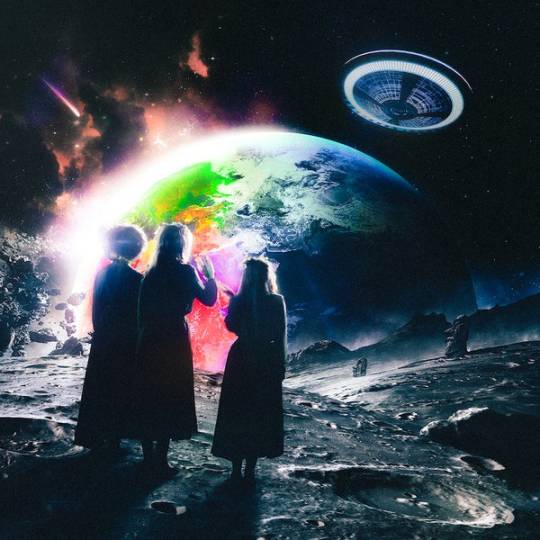
This one spent two years in label purgatory, but it finally arrived in March to prove Lil Uzi Vert can do it all. He’s at his most versatile here, spitting and crooning, boasting and balladeering. “You Better Move” is an early standout packed with playful nostalgia, including a beat that samples that classic PC pinball game and delightful jabs like these:
Yeah, step on competition, changin' my shoes
Green shirt, bitch, I'm Steve, where is Blue?
Every chain on, I pity a fool
I'm an iPod, man, you more like a Zune
Made her eat on my dick with a spoon, ew
Versace drawers, bitch, you Fruit of the Loom
Then there are the melodic tracks like “Urgency,” which compel you to hum along even on the first listen. The excellent diversity made it worth the wait for this hourlong journey to another planet.
Sturgill Simpson, “Cuttin’ Grass Vol. 1: The Butcher Shoppe Sessions”
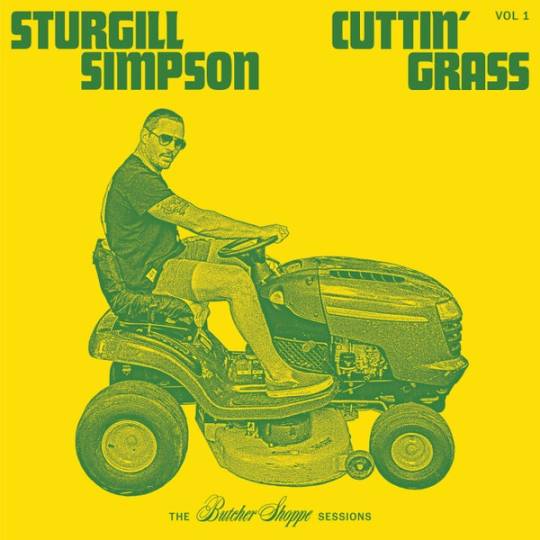
I haven’t spent much time with Sturgill Simpson outside of 2014′s “Metamodern Sounds in Country Music,” and I can’t say I’ve ever listened to another bluegrass album all the way through. But these new cuts of songs picked from Simpson’s catalog are wonderfully enticing. Simpson puts the talents of his backing band front and center, and their harmonies and rhythms illuminate his vivd songwriting in new ways. It was a great introduction to the genre for me.
Fiona Apple, “Fetch The Bolt Cutters”
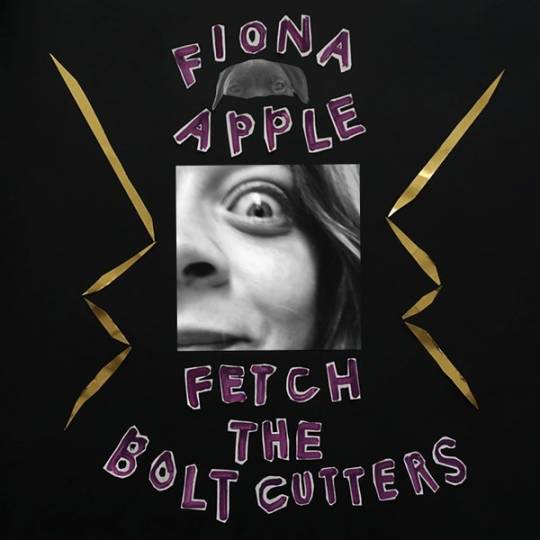
I got here after the hype, after the perfect 10, after all the year-end number-ones. Fiona Apple lives up to all of it. Her compositions are complex and evocative, the lyrics tender and biting at once. Her artistry is unsparing. The chorus to the title track is already getting stuck in my head, and I can’t wait to spend more time with this one.
Bea Troxel, “The Way That It Feels” (2017)
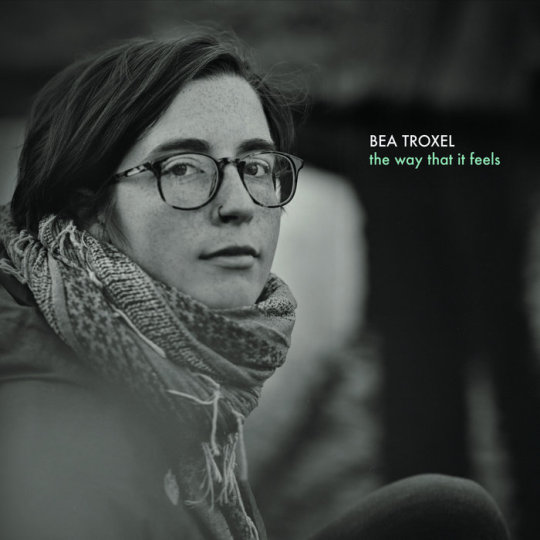
Almost a decade has passed since I first saw Bea Troxel play. She was in an incredibly talented trio with two of my high school classmates: Maeve Thorne (who has an entrancing solo EP of her own), and Rita Pfeiffer (the violinist on this record). They ended up winning my school’s battle of the bands, and I got to interview them for the student newspaper. Shortly after our senior year, they recorded an album that still outshines most of today’s indie folk. So I jumped at the chance to all three of them again in Brooklyn.
Troxel’s performance in particular was a revelation. I won’t ever forget how I fell into a trance as she picked away at “Talc,” which exemplifies her gift for natural metaphor. I haven’t stopped playing her record since, and it’s been a constant comfort throughout this year. Her voice is one of a kind, her songwriting is rich, and the compositions flow together beautifully. I can’t wait for more; in the meantime, “The Way That It Feels” will be on repeat.
Travis Scott, “Birds In The Trap Sing McKnight” (2016)

There’s been much ado about the brilliance of “Astroworld,” Travis Scott’s magnum opus, but I have a soft spot for his sophomore LP, where he reached the peak of the spare and heavy sound that started to take shape on “Owl Pharaoh.” There are plenty of sonic layers here, and the ordering of the tracks is a craft in itself — a series of peaks and valleys that glides from the haze of “beibs in the trap” to the climax of “goosebumps” and then into the cool waters of “pick up the phone.” It feels like Scott is guiding you to and from these destinations. The journey is, as The Weeknd might put it, “wonderful.”
Harmonium, “Harmonium” (1974)
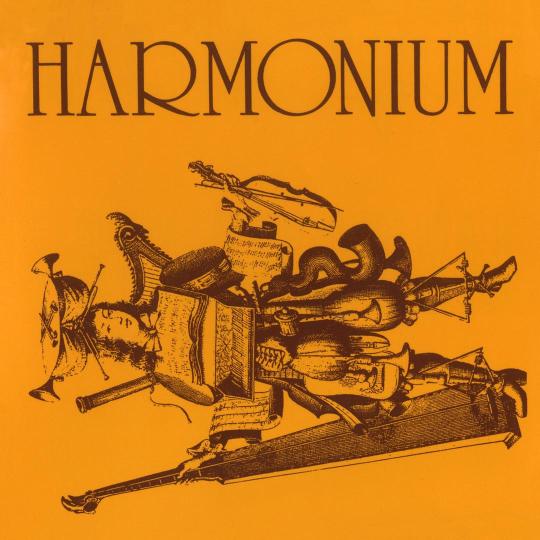
One of my pandemic binges was “Letterkenny,” the sharp Ontario-set sitcom with top-notch banter and a great soundtrack full of indie hits and Canadian deep cuts. The fight scenes are elegantly choreographed, but so are the handful of sequences at the end of key episodes that reveal the show’s emotional bedrock. One such scene is set to Harmonium’s “Un musicien parmi tant d'autres” — the main characters are reveling in a bar with their Québécois pals, whom they’ve just helped beat up a rival group. As the song builds to its climactic chorus, leading man Wayne, surrounded by couples, realizes his longing for companionship. Another fight breaks out, but instead of joining in, Wayne makes his way through the slow-motion fray toward the woman he’ll propose to in the next season. (Their relationship later falls apart, but that doesn’t undercut this scene’s beauty.)
This is probably the first foreign-language album I’ve listened to in full, but all of it evokes that feeling for me — the joy of walking through the chaos to reach what’s really important. Not a bad sentiment for these times.
Bon Iver, “22, A Million”
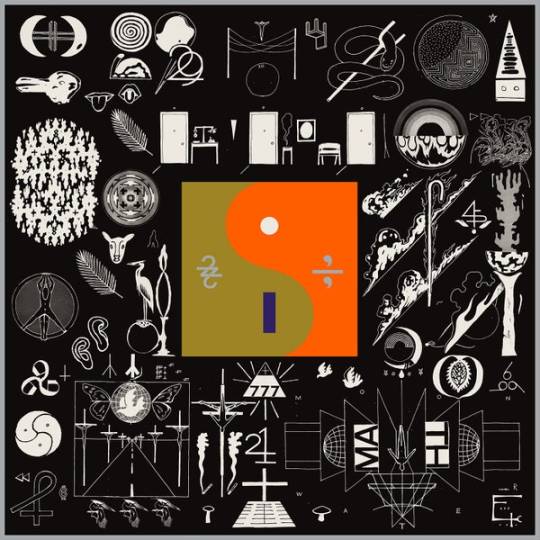
To talk about this weird, dark and brilliant album, I need to talk about “715 - CR∑∑KS.” Everyone I’ve talked to about the third track on “22, A Million” either loves it or can’t stand it. I’m devoted to it to the extent that it was my most-played song on Spotify this year. It oscillates between tenderness and fear, between silence and explosions of sound. The lyrics are an epitome of Justin Vernon’s cryptic poetry. It’s isolated and spare and enthralling and beautiful in its own bizarre way — just like the rest of the album, which is rich with themes of persevering through the darkness in spite of the uncertainty about when the light will appear. Vernon is alone on “CR∑∑KS,” but he’s accompanied by a cacophony of his own voice. As alone as we might feel right now, there’s always someone else shouting through the darkness with us, even if we can’t see them.
#music#2020#bon iver#harmonium#bea troxel#travis scott#lil uzi vert#sturgill simpson#fiona apple#fleet foxes#tame impala
2 notes
·
View notes
Text
Favorites from 2018
The drives to my old job were mostly miserable. But I looked forward to my Friday commutes for two reasons: the obvious one, and the fact that I could spend a couple good hours with that day’s new music. I first listened to two of 2017’s best albums — Kendrick Lamar’s “DAMN.” and SZA’s “ctrl” — on my way to work, absorbing their brilliance and briefly forgetting, in a nice way, where I was going and why.
This year was my first without a car, so I’ve felt tuned out of the new work that’s been released. Music can get lost in the noise of the subway and the street, and it’s too easy to get distracted by email or something else. But a handful of albums cut through through the noise.
These are the ones I liked best, in no particular order (plus some one-offs that I could listen to on repeat).
Courtney Barnett, “Tell Me How You Really Feel”
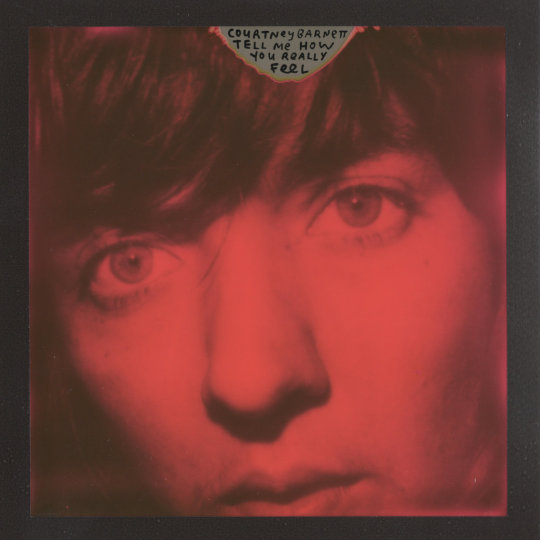
Courtney Barnett’s songwriting here is still tinged with her trademark wit and self-awareness. But she’s abandoned any lingering self-consciousness to speak frankly about the tumult in her inner and outer worlds. “City Looks Pretty” is full of human contradictions between anxiety and optimism. There’s a pair of righteous feminist anthems in “Nameless, Faceless” and “I’m Not Your Mother, I’m Not Your Bitch.” And the closer “Sunday Roast” offers a soft landing in a reminder that friendship and support are out there, no matter how invisible they often seem.
Empress Of, “Us”

Lorely Rodriguez’s sophomore album is a little less dark, a little less experimental, but no less beautiful than her debut. Her voice lilts over production that evokes a particular warmth of young love and companionship. Her sharp songwriting captures such images, especially on “Everything To Me.”
Earl Sweatshirt, “Some Rap Songs”
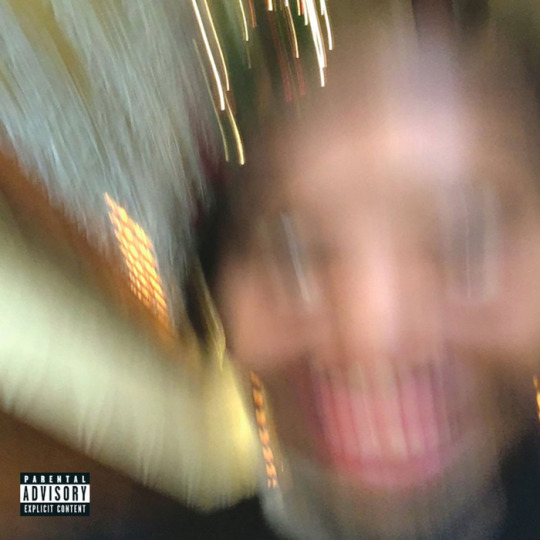
This album reveals a new layer of its ingenuity with each listen. The rich production coalesces with Thebe Kgositsile darkly meditative lyrics to form a composition that’s cohesive but hard to definitively pin down. Earl has a way of making the beats conform to his flows without putting his own voice out in front. This one also gets points for the “Black Dynamite” reference.
Cardi B, “Invasion of Privacy”
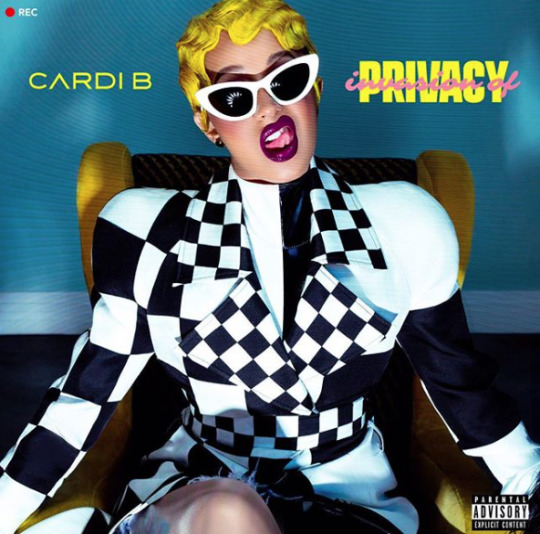
What else is there to say about Cardi B? This record runs the gamut of 2018′s popular music without feeling like an amalgam. Cardi runs the show, outshining all her guests on an album with some of the year’s best features (Takeoff’s verse on “Drip” is a revelation and SZA’s vocals on “I Do” are extraordinary). She’s at the top of her game and not coming down any time soon.
Pusha T, “Daytona”

There were so many things that made me want to dislike this album — the tasteless cover, the Rick Ross feature, Kanye’s unnecessary verse. But there’s no denying its excellence. Pusha T is probably the only artist well served by Kanye’s seven-track stricture. Every word is in its place. Every line, every image, every jab is carefully considered. The songs are not spare, but nothing is wasted. It is, suitably, the antidote to Drake’s double-album indulgence.
The Beths, “Future Me Hates Me”
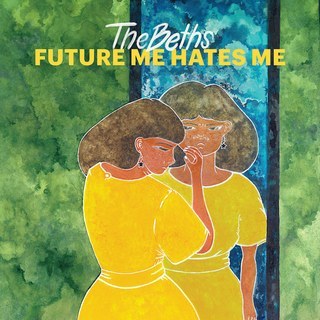
The New Zealand quartet’s debut LP is full of clever songs about anxiety and and self-consciousness. They have a sense of self-awareness and charm — as NPR noted, it’s hard not to love the phrase “I’ve been stressed” sung in a tight harmony on “You Wouldn’t Like Me.” The Beths also released a couple of great Christmas songs at the end of the year. I’m looking forward to more from them.
Natalie Prass, “The Future And The Past”
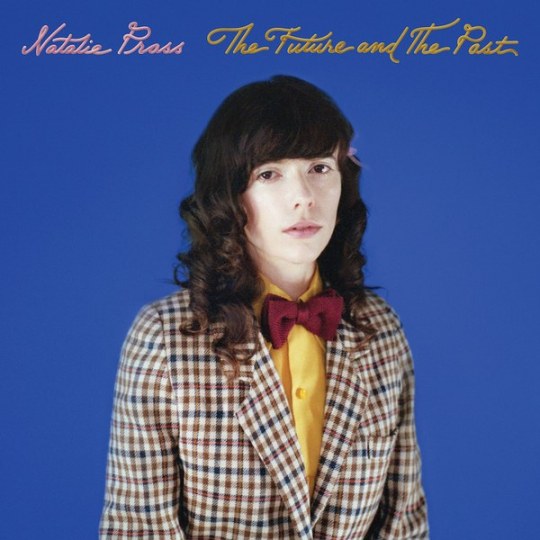
The swirling funk rhythm and Prass’s alluring vocals on “Oh My” drew me into this album. The rest delivers similarly rich compositions paired with earnest lyrics about the current political reality and how to resist it (”You gotta keep your sisters close to ya”). The songs maintain a sonic aesthetic that makes it tough to turn away.
The Carters, “Everything Is Love”
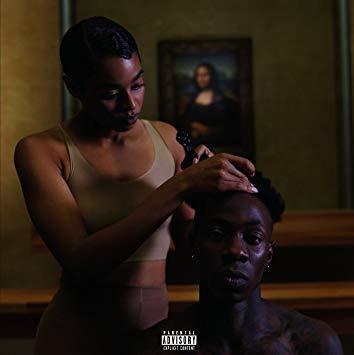
Here are The Carters at the peak of their reign as America’s royal family. On this summer surprise, they’re unapologetic about their success, their blackness and their love for each other. There are just so many good songs! Beyonce is the album’s most impressive force, crooning and rapping and delivering hooks and one-liners (”If I gave two fucks about streaming numbers, woulda put Lemonade up on Spotify”). But Jay Z also has some strong verses, and their dynamic is a delight.
Ty Segall, “Freedom’s Goblin”
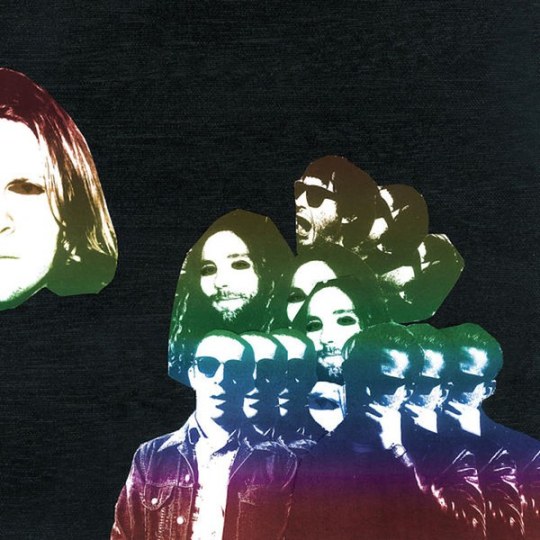
In my favorite movie, “Frances Ha,” there’s a scene where the protagonist wanders absentmindedly through Paris after sleeping through most of her only day there, oblivious to the glittering sights around her. The soundtrack for this brief montage, Hot Chocolate’s “Every 1’s a Winner,” contributes to its bittersweet irony. Ty Segall’s cover of that song on “Freedom’s Goblin” has no time for such things. It explodes a disco-esque jaunt from the band that also produced “You Sexy Thing” into a mosh-worthy romp. It sort of encapsulates the first of six projects Segall released last year — he draws on seemingly all of his eclectic influences to create a sprawling album with surprises at every turn. It has echoes of his garage roots but moves well beyond them.
Noname, Room 25
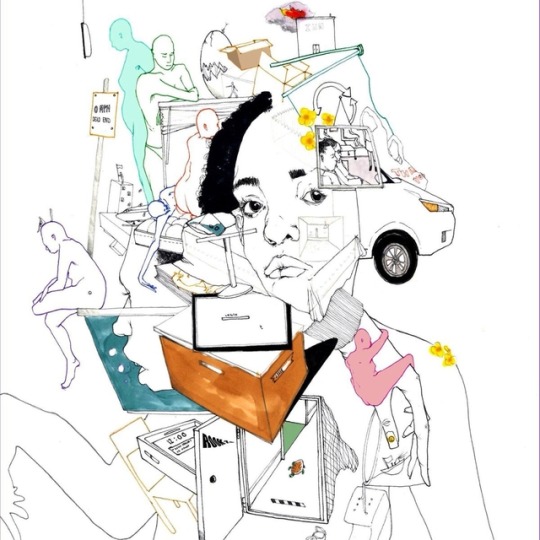
I admittedly haven’t spent enough time with this album to entirely unpack it, but I’m unsure I’ll ever be able to. Noname shows her mastery as a lyricist here, and her roots as a slam poet show through. The production is both warm and urgent, serving as an ideal background for her performance.
One-Offs
Courtney Barnett, “Small Talk” — I didn’t think it was possible to so perfectly capture the small agony of making conversation at a party where you just really want to see one person, but Courtney Barnett has done it.
Madeline Kenney, “Cut Me Off” — An eerie sample of the “wait” that some crosswalks bark at you builds into a wonderfully layered song that comes to a perfectly abrupt end.
Lil Baby feat. Drake, “Yes Indeed” — Drake tweaks the triplet flow just enough that it sounds inventive and Lil Baby offers such brilliance as “Cartier glasses, I won’t even peek at you/Yellow Ferrari like Pikachu.”
N.E.R.D. feat. Rihanna, “Lemon (Drake Remix)” — This version is best because it has the least Pharrell. But we’re really just here for Rihanna. The song really should have had three Rihanna verses, but the one she slays here is worth everything else.
21 Savage, “a lot” — The first song on 21 Savage’s latest is also by far the best. His rapping is impressive and there’s an actually tolerable feature from J. Cole.
Childish Gambino, “This Is America” — The video makes the song, but the chorus of ad-libs is an ingenious device in itself.
Jay Rock, Kendrick Lamar, Future and James Blake, “King’s Dead” — This standout from the “Black Panther” album moves effortlessly from Jay Rock’s no-nonsense flow to Future’s falsetto jesting to Kendrick Lamar’s compelling interpretation of Killmonger.
0 notes
Text
TBT: St. Vincent’s self-titled enigma

Photo: Consequence of Sound
St. Vincent reopened submissions for her Mixtape Delivery Service this week, and today is Thursday, so I figured this was a good opportunity (or excuse?) to pull my review of her self-titled record out of the vault. Originally published in my college newspaper, The Transcript.
The self-titled album is a curious beast.
Most often it seems a cop-out when no other title fits a record because it lacks unification. But then there are self-titled works like St. Vincent’s.
This is a record where the artist goes on a journey of self-definition and shares what she finds. Titling it after the artist herself, then, unifies it in a way no other title could. This is what makes “St. Vincent” so compelling.
Annie Clark, the woman behind the pseudonym, opens the record with a story of being confronted by a rattlesnake naked in the desert. It alerts her that she isn’t “the only one in the only world” — but she might desperately want to be.
With this comes two of the most eloquent, coherent indictments of America’s dangerously obsessive relationship with technology, the Internet and social media. “Huey Newton” and “Digital Witness” expose how these provide space for us to say and do anything we want without consequence, where we can hide behind anonymity or identities not our own, how we have a compulsion to share everything — and how truly grotesque it all is.
The songs are juxtaposed with “Prince Johnny,” a song about how people often need each other’s help in the real world free of judgment.
Clark’s whole self, both the parts that desire isolation and those that recognize the importance of relationships, is present here. She fully embraces the power of self-identity inherent in self-titled albums. The question remains whether this is Clark’s identity or that of a persona — St. Vincent’s. But that mystery makes her the enigma she is.
0 notes
Text
Putting down roots in pieces of home
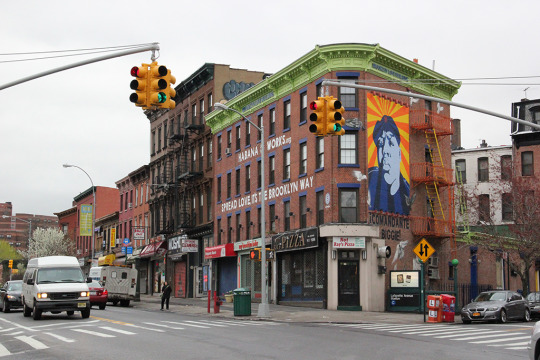
Biggie watches over a Fort Greene subway stop I know well. (Photo by Daniel Rojo)
I am writing this in a small, expensive coffee shop in Fort Greene, Brooklyn, my second home. I suppose that’s what it’s called; right now, I’m not sure where my “first” home is.
A couple months ago I would’ve called college my first home, but I have graduated and can no longer rightly do that. I haven’t been to the home where I grew up in six months, the longest I’ve ever stayed away. Brooklyn will be my home a couple months from now—my partner is here, and we’ve been planning this move for almost a year. But where I live “permanently,” a little vacation community on Lake Erie in northern Ohio, is a place I know is wholly temporary, where I don’t want to put down roots.
Since I got to this place, almost all I have done is longed for New York. In my down time at work, I read Wikipedia articles about the city. One day I read the entire article about the Bronx. I learned a little bit about the history of Fort Greene, my partner’s current home. When I was here last, I walked through the heart of Times Square to get back some of the energy I had lost. I sat in Bryant Park and felt at home there. I can’t be present in this temporary home because, for one, I do not want to be there, and for another, I know that it is only a transitional step into a permanent, desired place.
I’m attached to New York though I have only been here a handful of times. My roots have pierced the ground here and they’re overextended, stretching from here to Ohio. It’s a double-edged sword. It feels good to know I’ve found a place that invigorates me, one that makes me always want to return. But when I leave, I’m always sad that I’m not there, and that takes away a lot of energy.
I know I’m not alone in feeling this connection to a place I have never lived, or at least in feeling a desire to be away from where I am. Someone I live with searches for jobs in New York and California in their spare time, even though they have a year and a half of college left. Two friends of mine say their hearts have been “claimed” the Rosebud Indian Reservation in South Dakota after profound experiences going there and meeting people. I have been there, too, and I would be foolish not to believe them.
How does this happen? Why do people stay in one place and long to be in another? I would say it’s a generational phenomenon—I’m told millennials value transience. But one of the friends I mentioned is a Gen-X college professor. How do places we’ve only been once or twice or a handful of times take such strong holds on our hearts?
Home is such a complicated concept. Many say we find home in people, and I think that’s true—part of my connection to New York stems from the fact of my partner’s presence here, and my love for her. But I think place is an important part of home, too, at least for me. There are places that resonate with who I am, and there are places that do not. The places I have called home give me energy and make me feel closer to myself.
I’ve found ways to give myself little pieces of New York in Ohio. Every morning I drink coffee out of a mug printed with part of the Manhattan skyline. The West Fourth Street I pass on my way to work reminds me of where my partner gets off the subway on her way to work. I tried my hand at making bagels (and was pretty successful). They don’t turn Ohio into New York, but they sure help.
0 notes